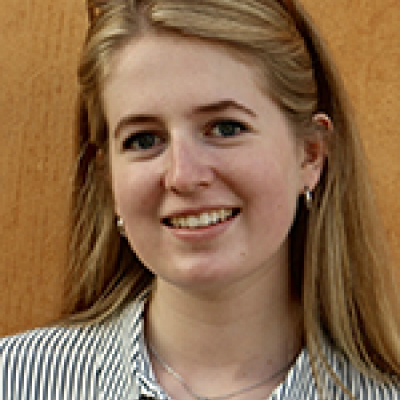Ella Walsh
Doctor of Philosophy (DPhil) in Geography and the Environment - Degree completed in 2022
Supervisors: Professor David S.G. Thomas and Dr Sallie Burrough
Member of the Oxford Luminescence Dating (OLD) Lab
Doctor of Philosophy (DPhil) in Geography and the Environment - Degree completed in 2022
Supervisors: Professor David S.G. Thomas and Dr Sallie Burrough
Member of the Oxford Luminescence Dating (OLD) Lab
Late Quaternary hydrological change from valley fill complexes in Namibia
Academic Profile
Ella is a NERC-funded doctoral student on the Environmental Research Doctoral Training Partnership. Her research focuses on understanding hydrological change in Southern Africa during the late Quaternary by studying valley fill deposits in ephemeral fluvial systems. She is based in the Oxford Luminescence Dating laboratory in the School of Geography and the Environment.
She holds a BA in Geography from University of Oxford. During her degree, she focused on the study of desert landscapes, the Quaternary period and climatic change and variability. For her dissertation, she produced the first fire history of Lebanon by analysing the charcoal content in a sediment core extracted from the Aammiq wetland.
Ella has taught tutorials for the FHS Earth System Dynamics course, has assisted on undergraduate fieldwork, and has taught on the Methods in Physical Geography course.
Awards
- 2019 Quaternary Research Association New Research Workers Award
- 2019 British Society of Geomorphology Postgraduate Research Award
- 2018, 2019, 2020 Graduate Travel Grant, Hertford College (University of Oxford)
- 2017-2021 Mortimer May scholarship, Hertford College (University of Oxford)
- 2017-2021 Natural Environmental Research Council DTP studentship
- 2017 Nominated for the Quaternary Research Association undergraduate dissertation prize
- 2016 EPSRC Vacation Bursary Scheme (University of Exeter)
- 2015-2017 Academic scholarship, Hertford College (University of Oxford)
- 2015 John House Prize for highest aggregate mark in Prelim Geography (University of Oxford)
Current Research
Ella is interested in the landscape responses to climatic variability in dryland regions on Quaternary timescales. For her doctoral research, she is focusing on valley fill deposits within ephemeral fluvial systems in Namibia. This research aims to reconstruct how the fluvial regime of such rivers has changed over time, and what this might mean in terms of southern African hydrological change.
Syntheses of robust palaeoclimatic records across southern Africa detail significant yet spatially complex climatic and hydrological change during the late Quaternary. Less evident from these records, however, is how the landscape may have responded. Despite having an arid climate, Namibia possesses spatially limited but well-defined river systems. Many of the ephemeral systems have significant valley fill sediments that attest to more powerful fluvial activity in the past. Whilst there exists a longstanding body of fluvial research here, studies have reached variable palaeohydrological and ambiguous climatic interpretations of fluvial silts. For these archives to make a substantial contribution, robust methodologies to reconstruct depositional contexts need to be developed.
This research focuses on two fluvial systems, the Huab in northern Namibia, and the Huns in the South. This research combines luminescence dating with sedimentary methods to establish the timing and nature of processes of deposition in valley fill sediments. These methods incorporate geochemical analysis, assessment of heavy mineral assemblages, thin section micromorphology and grain size analysis. Reconstruction of the timing and causes of channel flow in these two fluvial systems hopes to tell us about spatial patterning of palaeohydrological change in Namibia over the last 20,000 years.
Dryland fluvial systems have been identified as the primary sources of dust supply to the atmosphere, providing nutrients to oceans and the humid tropics. Whilst remote sensing has enabled the identification of these sources, very little is known about environmental conditions under which sediment was deposited. Key questions include where dust source material came from, how often it is supplied to desert valleys, and therefore how sustainable sources are. By investigating the palaeoenvironmental context of a valley fill in the Skeleton Coast, Ella hopes to produce palaeoenvironmental data on sediments, sources, and ages of deposition to help answer some of these questions.
Selected Publications
Journal Articles
- Walsh, E., Caracciolo, L., Ravidà, D., Burrough, S., and Thomas, D. (2022) Holocene fluvial depositional regimes of the Huab River, Skeleton Coast, Namibia. Earth Surface Processes and Landforms, 1-25.
- Hawcroft, M., Walsh, E., Hodges, K. and Zappa, G. (2018) Significantly increased extreme precipitation expected in Europe and North America from extratropical cyclones. Environmental Research Letters, 13(12).





